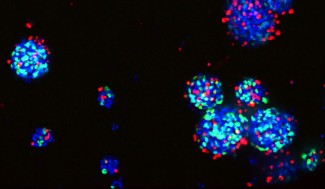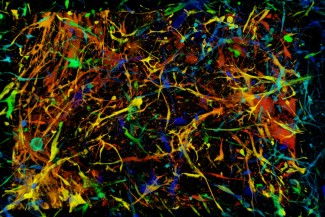What is a Primary Central Nervous System Lymphoma?
Primary central nervous system lymphomas (PCNSL) are characterized by the proliferation of B lymphocytes, immune cells designed to defend the body against viruses and bacteria.
PCNSLs develop in the brain, meninges, spinal cord and eyes, and account for 5% of malignant brain tumors.
These tumors affect 400 new people each year, and there has been an increase in the number of new cases among older people, with those over 60 accounting for more than 70% of cases.
How are Primary Central Nervous System Lymphomas Diagnosed?
The diagnosis of these tumors is based on brain imaging and measurement of interleukin, an immune molecule found in cerebrospinal fluid, combined with clinical symptoms such as cognitive and behavioral disorders and signs of intracranial hypertension. Patients with PCNSL can present with a very wide range of clinical and radiological findings, making diagnosis more difficult.
How are Primary Central Nervous System Lymphomas Treated?
The first-line treatment is corticosteroids, which generally produce a rapid but short-lived improvement. The recurrence rate for these brain tumors is high.
Chemotherapy with IV methotrexate causes lasting regression and can be combined with radiation therapy.
The median survival rate at five years is approximately 35%.
At Paris Brain Institute
The research being conducted by Agusti Alentorn, a neurologist and researcher in the Brain Tumor Heterogeneity, Immunity and Therapy group, aims to define molecular profiles to aid diagnosis and make it possible to establish appropriate treatment at an earlier stage. His research has focused more specifically on the study of brain tissue from 250 patients with PCNSL associated with clinical and radiological criteria.
Joint analysis of these data has identified four specific patient profiles associated with a more or less severe and rapid prognosis. These results, published in the prestigious journal Annals of Oncology, will enable better assessment of each patient with PCNSL, thereby reducing the time to diagnosis and allowing for faster and more targeted treatment.








